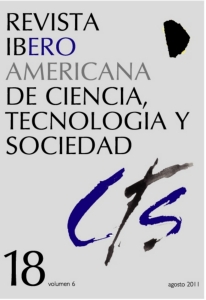La brecha digital correspondiente
obstáculos y facilitadores del uso de TIC en padres de clase media y media baja en Chile
DOI:
https://doi.org/10.52712/issn.1850-0013-755Palabras clave:
inclusión digital, brecha digital, Internet, celularesResumen
Este artículo resume los hallazgos en Chile de un estudio internacional cualitativo que buscaba delinear las razones que explican por qué y cómo las personas se apropian de las TIC y las integran (o no) a su vida cotidiana. Ello implica exponer un modelo teórico que explique el uso y apropiación de tecnologías digitales de información y comunicación (TIC), en particular Internet y celulares. Para ello, se reportan los resultados de focus groups realizados con personas poco estudiadas previamente, pero sometidas a presiones sociales importantes para involucrarse con las TIC: padres y madres de niños en edad escolar de clase media y media baja. Para contextualizar los hallazgos cualitativos, se expone una síntesis de datos cuantitativos derivados del estudio World Internet Project (WIP) en el que participan los autores.
Descargas
Citas
AVILÉS, D., GODOY, S. y SEPULVEDA, M. (2009): “Size, Structure, and Growth of the Children Information Economy”, en U. Karmarker y V. Mangal (Eds.): The UCLA Anderson Business And Information Technologies (BIT) Project. A Global Study of Business Practice, Singapur/Hackensack NJ/Londres, World Scientific Publishing Company.
CASTELLS, M. (2000): The Rise of the Network Society (2º ed.), Malden, EE.UU., Blackwell.
GODOY, S. y HERRERA, S. (2004): “Qué ocurre cuando se usa (y no se usa) Internet: resultados del World Internet Project-Chile”, Cuadernos de Información Nº 16-17, pp. 71-84.
GODOY, S. y HERRERA, S. (2008): “Precisions About the Broadband Divide in Chile”, en Y. K. Dwivedi, A. Papazafeiropoulou y J. Choudrie (Eds.): Handbook of Research in Global Diffusion of Broadband Data Transmission, Hershey, PA, IGI Global, pp. 427-445.
GODOY, S. y HELSPER, E. (2011): “The Long Tail of Digital Exclusion: a comparison between the United Kingdom and Chile”, en ICT and Performance. Towards Comprehensive Measurement and Analysis, Nueva York, The Conference Board/Fundación Telefónica (próxima edición).
HARGITTAI, E. (2002): Second Level Digital Divide: Differences in people’s online skills, First Monday, 7(4), disponible en http://firstmonday.org/htbin/cgiwrap/bin/ojs/index.php/fm/article/view/942/864.
HILBERT, M. (2010): “Digital gender divide or technologically empowered women in developing countries? A typical case of lies, damned lies, and statistics”, documento no publicado, University of Southern California (USC), Annenberg School for Communication, United Nations Economic Commission for Latin America and the Caribbean (UN-ECLAC), Information Society Programme, DDPE, disponible en:
http://www.martinhilbert.net/DigitalGenderDivide.pdf.
HELSPER, E. (2008): Digital Inclusion: An Analysis of Social Disadvantage and the Information Society, Londres, Communities and Local Government.
LIVINGSTONE, S. y HELSPER, E. (2007): “Gradations in digital inclusion: children, young people and the digital divide”, New Media & Society, 9(4), pp. 671-696.
MIDEPLAN (2010): “Encuesta Casen 2009”, Santiago de Chile, Ministerio de Planificación del Gobierno de Chile, disponible en http://www.mideplan.cl/casen2009/RESULTADOS_CASEN_2009.pdf.
MINISTERIO DE ECONOMÍA DEL GOBIERNO DE CHILE (Eds.) (2008): Estrategia Digital 2007-2012, disponible en www.estrategiadigital.gob.cl
NORRIS, P. (2001): Digital divide: Civic engagement, information poverty, and the Internet worldwide, Cambridge, MA, Cambridge University Press.
PNUD (2006): Informe Desarrollo Humano en Chile. Las nuevas tecnologías, ¿un nuevo salto al futuro?, Santiago de Chile, Programa de Naciones Unidas para el Desarrollo.
PNUD (2009): Human Development Report 2009. Overcoming barriers: Human mobility and development, disponible en http://hdr.undp.org/en/media/HDR_2009_EN_Complete.pdf.
SELWYN, N. (2004): “Reconsidering political and popular understandings of the digital divide”, New Media & Society, 6(3), pp. 341-362.
SUBTEL (2009): IV Informe de Resultados. Encuesta de Satisfacción de Usuarios de Servicios de Telecomunicaciones, Secretaria de Telecomunicaciones Ministerio de Transporte y Telecomunicaciones, disponible en ww.subtel.cl/prontus_subtel/site/artic/20100205/asocfile/20100205163927/iv_informe_subtel_n09.pdf.
VAN DIJK, J. (2005): The deepening divide: Inequality in the Information Society, Thousand Oaks, CA, EE.UU., Sage.
VAN DIJK, J. (2006). “Digital divide research, achievements and shortcomings”, Poetics, 34(4-5), pp. 221-235
WARSCHAUER, M. (2004): Technology and social inclusion: Rethinking the digital divide, Cambridge, MA, MIT Press.
WORLD ECONOMIC FORUM (2009): The Global Information Technology Report 2008-2009, disponible en www.weforum.org/pdf/gitr/2009/Rankings.pdf.
WORLD INTERNET PROJECT (2009): World Internet Project Report, Los Angeles, CA, USC Center for the Digital Future, disponible en www.digitalcenter.org/pages/site_content.asp?intGlobalId=44.
WORLD INTERNET PROJECT (2010): World Internet Project Report, Los Angeles, CA, USC Center for the Digital Future, disponible en www.digitalcenter.org/pages/site_content.asp?intGlobalId=42.
WORLD INTERNET PROJECT – CHILE (2009): Los internautas chilenos y sus símiles en el resto del mundo: resultados del estudio WIP-Chile 2008, Santiago de Chile, Facultad de Comunicaciones UC/CCS, disponible en http://comunicaciones.uc.cl/prontus_fcom/site/artic/20080418/mmedia/MULTIMEDIA_220080418230431.pdf
Descargas
Publicado
Cómo citar
Número
Sección
Licencia
Derechos de autor 2024 CC Attribution 4.0

Esta obra está bajo una licencia internacional Creative Commons Atribución 4.0.
Todos los números de CTS y sus artículos individuales están bajo una licencia CC-BY.
Desde 2007, CTS proporciona un acceso libre, abierto y gratuito a todos sus contenidos, incluidos el archivo completo de su edición cuatrimestral y los diferentes productos presentados en su plataforma electrónica. Esta decisión se sustenta en la creencia de que ofrecer un acceso libre a los materiales publicados ayuda a un mayor y mejor intercambio del conocimiento.
A su vez, para el caso de su edición cuatrimestral, la revista permite a los repositorios institucionales y temáticos, así como también a las web personales, el auto-archivo de los artículos en su versión post-print o versión editorial, inmediatamente después de la publicación de la versión definitiva de cada número y bajo la condición de que se incorpore al auto-archivo un enlace a la fuente original.











